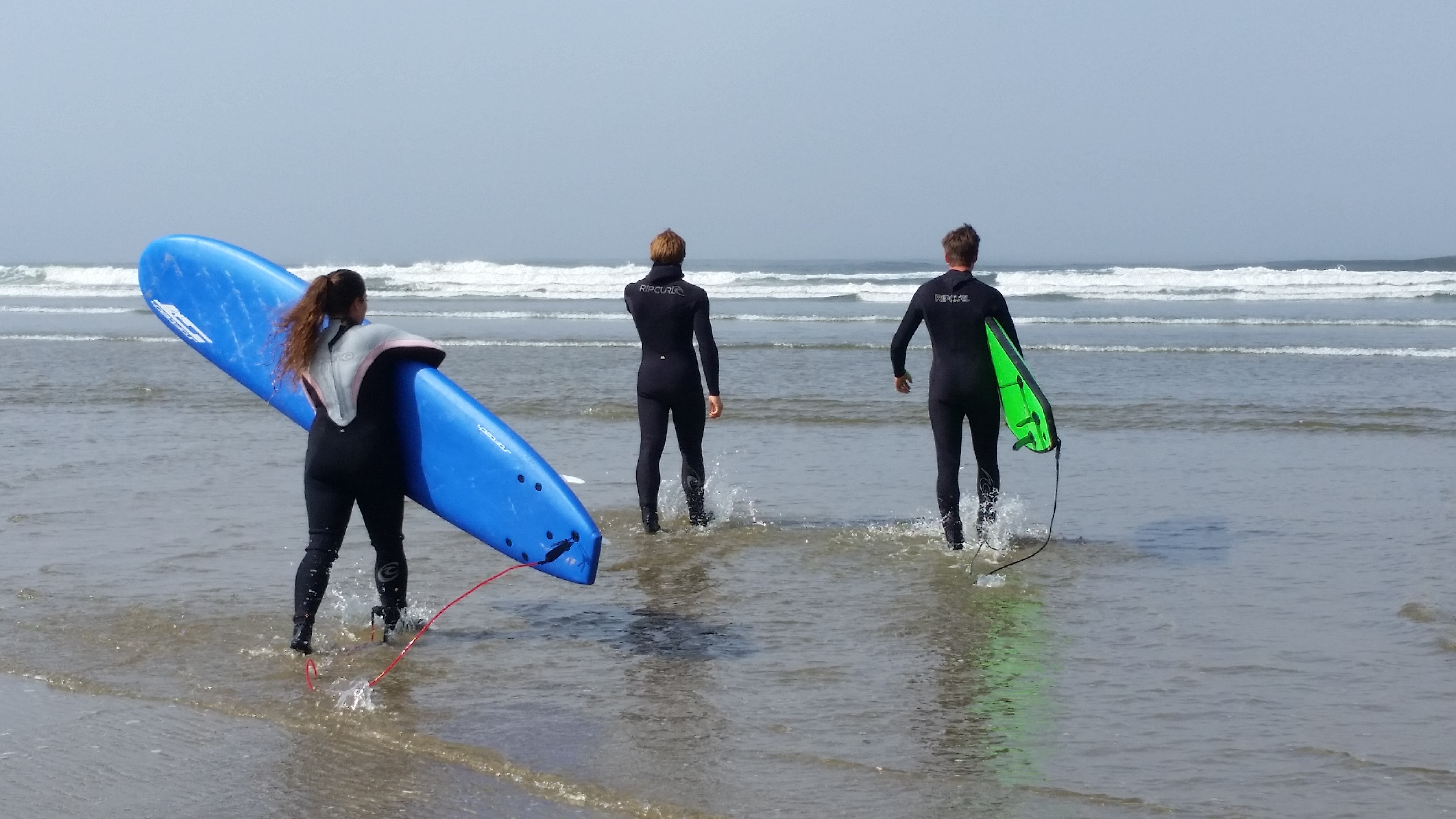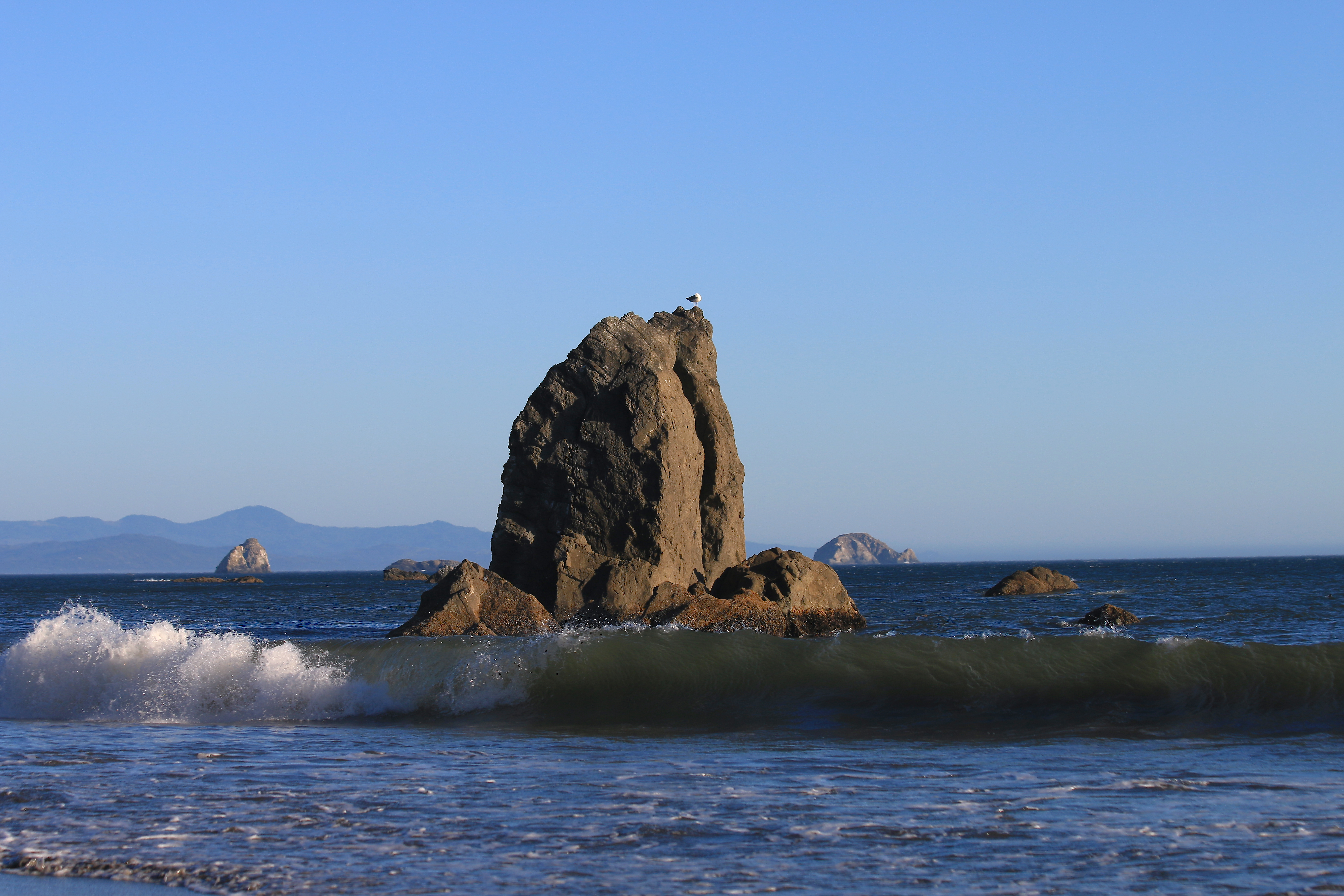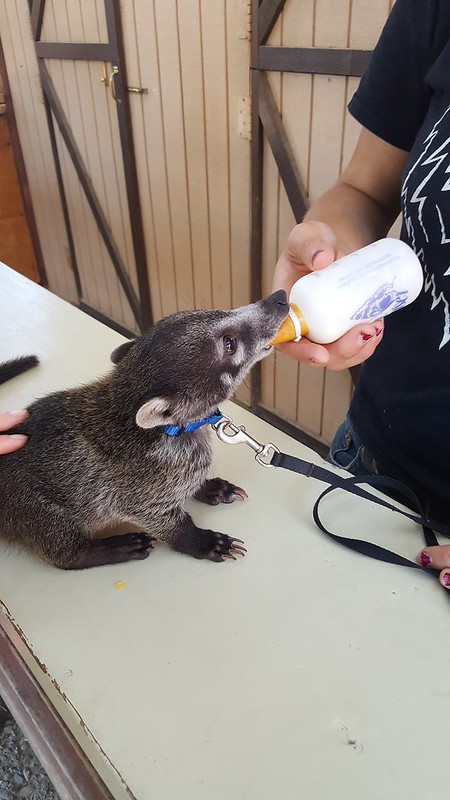This has been a pretty exciting week! On Tuesday, Katie and I gave our final presentation for the EPA. For Week 10 I’ll mainly be working on trying to identify trends in some oxygen data from a previous salt marsh study. On Friday, all of the interns gave a five minute presentation and participated in a poster session for sea grant and other people from HMSC. This was a bit nerve-racking but an overall valuable experience.
This past weekend was packed with activities. We saw some bioluminescence on South Beach, stuffed ourselves with some of the best tuna I’ve ever had at the Great Albacore Tuna BBQ Challenge, Justin and I took a surfing lesson, we we all grilled some great shish kabobs, and had a movie night.
If you get the chance to come to Newport for the Great Albacore Tuna BBQ Challenge I highly recommend going. It is relatively inexpensive and it was the best seafood I’ve had in Oregon so far. Just having the variety of different types of prepared tuna made it worth going. My favorite was the one that the Chamber of Commerce put together. I wish I had asked what they were calling it but it seemed to be a take on a Chinese food appetizer. It was amazing.
Surfing was one of the best experiences I’ve had while here in Oregon. I love being in the ocean, which is one of the main reasons I initially wanted to spend my life studying it. Surfing is just another great excuse for you to spend a ton of time in the ocean, so of course I loved it! It was very obvious that I wasn’t at all a natural at surfing but I was able to stand up a few times which was all I wanted to be able to do. I was shocked to find out how exhausting it is. Looking back at it though it does make sense. In order to get down to the spot where we surfed in Agate Beach, you have to climb down a pretty steep dirt pathway and then walk pretty far with the surfboard until you even get to the ocean. From there you have to simultaneously fight being over-topped by the waves, staying on the surfboard, and also trying to stand up (in order to do that you have to basically do a burpee which is hard to do even on solid ground). Personally, the hardest part was the fact that beginner surfboards are HUGE. I’m 5’ 0’’ and the surfboard was so large I couldn’t tuck it under my arm. So I had to awkwardly carry it over my head or out in front of me. Not surprisingly, the next day I had some trouble walking and lifting things. But it was so worth it.

Me with a giant surfboard and a giant smile



















